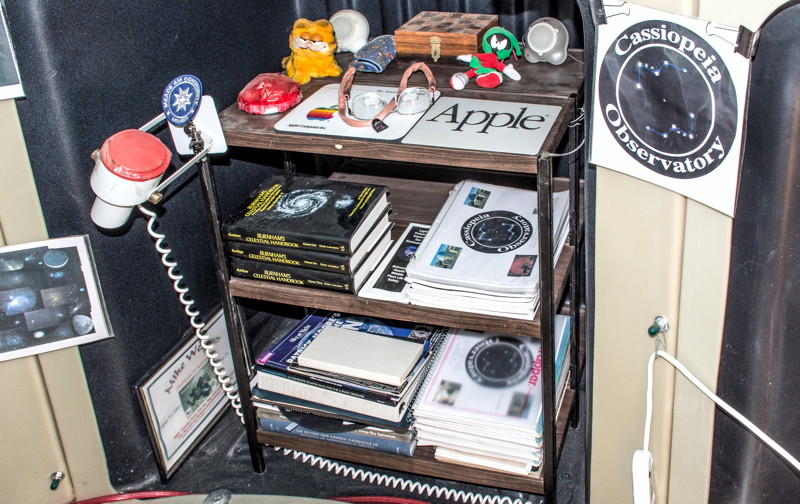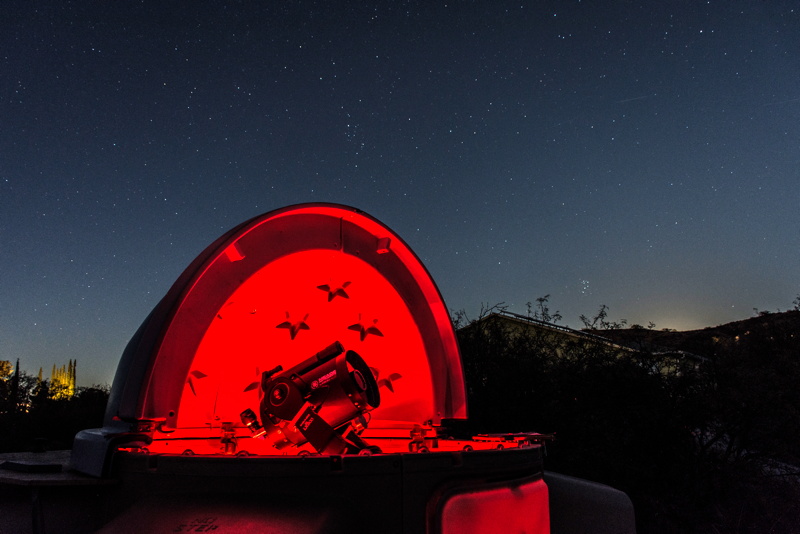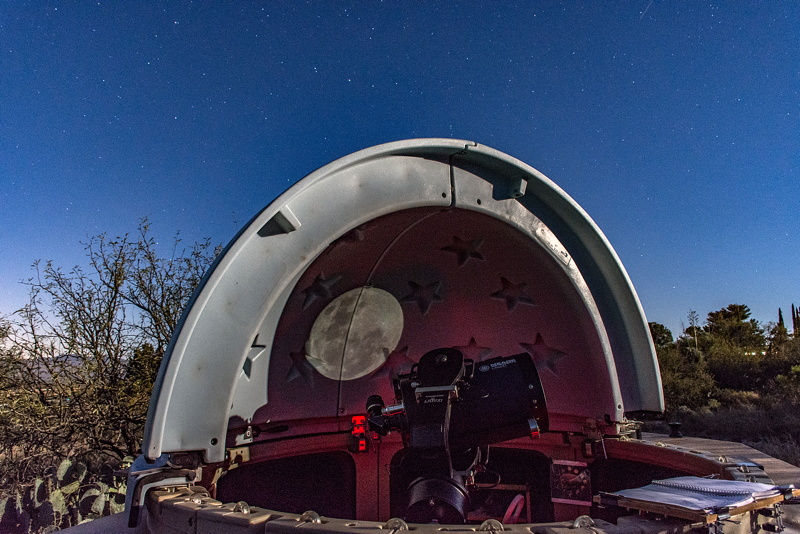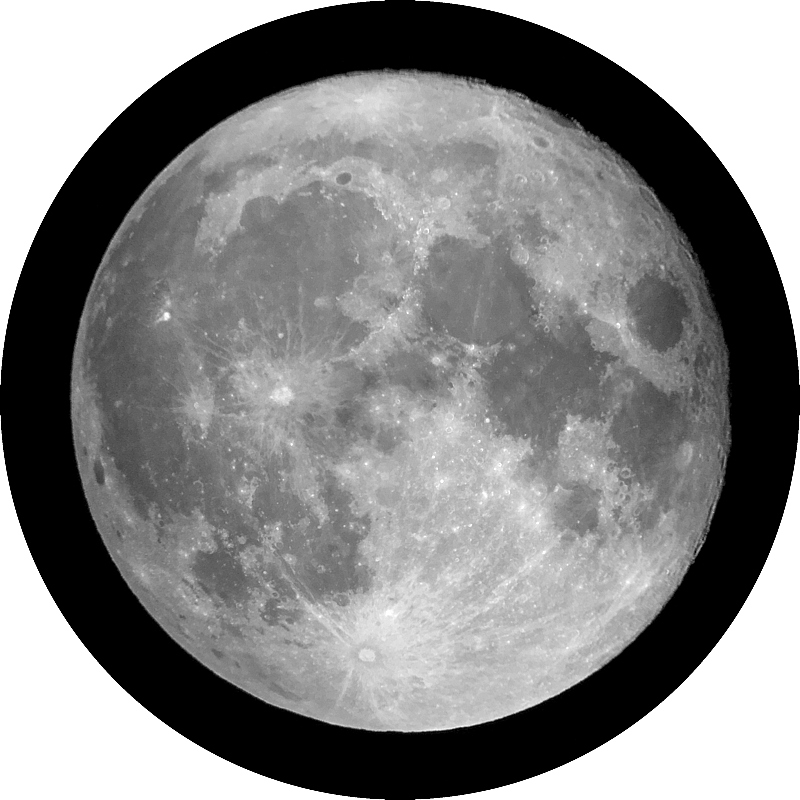Perigee-Syzygy Moon (aka "Super Moon") Take 2,
Moon on POD Dome
Posted: 15 November 2016
Monday morning, 14 November 2016, I went to the observatory to do a "fit and function test" of a cardboard mockup of a mirror focus lock add-on. Seems like it could work. Now I just need to find a suitable material to actually make it.
I also changed the shelf spacing for a bookcase in the observatory. There is now room for more books and charts:

|
Open: Monday, 14 November 2016, 1806 MST Temperature: 77°F |
Session: 1042 Conditions: Clear |
Equipment Used:
12" f/8 LX600 w/StarLock
Wired AutoStar II handset
2" 24mm UWA eyepiece
2" 30mm eyepiece
Camera:
D7200 DSLR
iPhone 6s Plus
1813 MST: LX600 ON, StarLock OFF, High Precision OFF.
SYNCed the AutoStar on the star Altair.
1816 MST: took a quick look at the planet Venus, 102X.
Then began preparing for the Perigee-Syzygy Moon (also known as the "Super Moon"). The Moon had been precisely Full Monday at 0652 MST, with the perigee a little before that. This "Super Moon" was the biggest and brightest it had been since the Full Moon in January 1948.
During my preparations I took this photo (D7200 DSLR, f/5, 10 seconds, ISO 400, FL 18mm) of the observatory with the constellation of Perseus and the Pleiades:

Click or tap on image for larger version
The glow from the rising Moon is visible above the hill to the right of the Pleiades. As the Moon began rising over the hill the album I was listening to on my iPod inside the SkyShed POD observatory started playing "Also sprach Zarathustra", which many people will remember from the movie "2001: A Space Odyssey". That was unexpected timing and very appropriate.
Shortly after the Moon was over the hill I took this photo (D7200 DSLR, f/8, 10 seconds, ISO 2500, FL 8mm fisheye lens):

The constellation of Cassiopeia is faintly visible over the observatory.
1855 MST: viewed the Moon with the 12" telescope, 102X. A slight terminator was visible as the Moon had been precisely Full 12 hours earlier.
I then projected the "Super Moon" on the observatory using the 2" 24mm UWA eyepiece. This photo (D7200 DSLR, f/5.6, 10 seconds, ISO 1600, FL 18mm) shows the scene:

Click or tap on image for larger version
Switched to the 2" 30mm eyepiece (81X) and mounted the iPhone 6s Plus using the Levenhuk adapter. 1920 MST: took this afocal 81X photo using the iOS Camera app and the Earbuds/Mic volume control as a remote shutter release:

1927 MST: final look at the Moon, 102X. 1929 MST: LX600 OFF.
|
Close: Monday, 14 November 2016, 1941 MST Temperature: 65°F |
Session Length: 1h 35m Conditions: Clear |
Comments are welcome using Email. Twitter users can use the button below to tweet this report to your followers. Thanks.
See the previous report for more photos of the "Super Moon".
Cassiopeia Observatory Home Page
Copyright ©2016 Michael L. Weasner / mweasner@me.com
URL = http://www.weasner.com/co/Reports/2016/11/15/index.html
